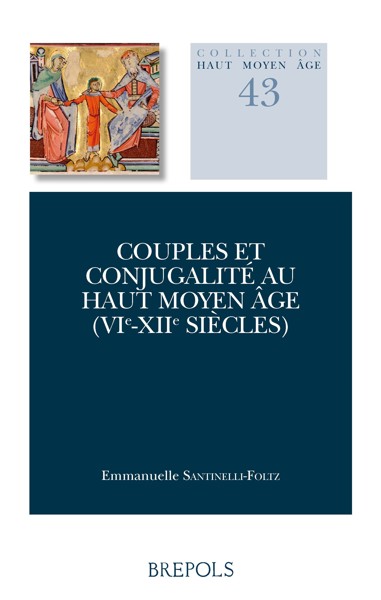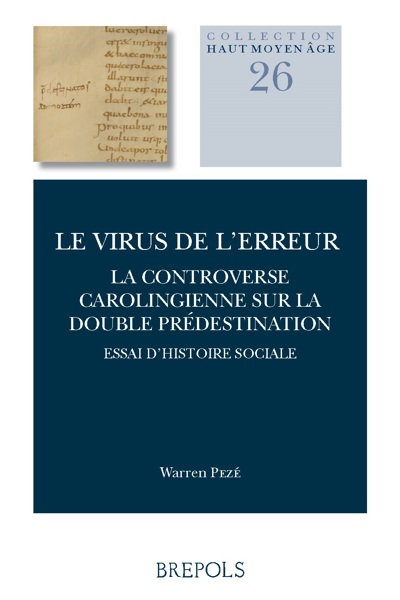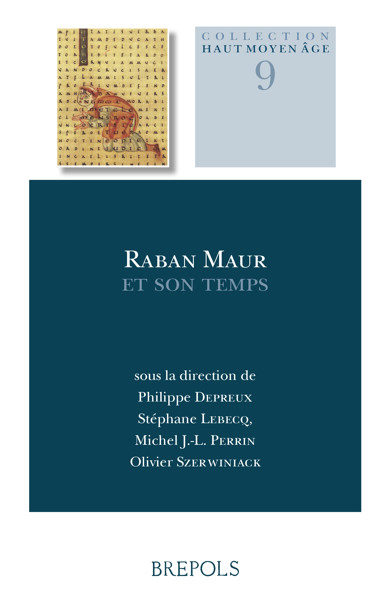
Sacred Places
Devotional Practices and Space Organization in Early Medieval Monasteries (5th-10th centuries)
Daniele Ferraiuolo, François Bougard (eds)
- Pages: 420 p.
- Size:156 x 234 mm
- Illustrations:81 b/w, 35 col., 20 tables b/w.
- Language(s):English, Italian, French
- Publication Year:2025
- € 95,00 EXCL. VAT RETAIL PRICE
- ISBN: 978-2-503-61660-5
- Paperback
- Available
- € 95,00 EXCL. VAT RETAIL PRICE
- ISBN: 978-2-503-61661-2
- E-book
- Available
An interdisciplinary discussion on the spatial relationship between 'clausura' and hospitality in Early Medieval monasteries.
François Bougard, former director of Medieval Studies at the École française de Rome (1997-2004) and professor of Medieval History at the University of Nanterre (2004-2020), is director of the Institut de recherche et d'histoire des textes (CNRS). His work focuses on the Early Middle Ages, especially the kingdom of Italy, and on the history of ancient libraries.
Daniele Ferraiuolo is researcher at the Department of Humanities, Ca' Foscari University of Venice. He was Marie-Curie Research Fellow at the Institut de recherche et d'histoire des textes (CNRS) in Paris and conduct many studies on Medieval monasteries and the relationships between space and inscriptions.
The body or relics of a saint could attract divine protection on the community and the place where they were kept. If, in some cases, the monasteries were structures of assistance to sanctuaries of certain notoriety, starting from the 7th century, they increasingly played the role of protagonists, autonomously managing the devotional activities derived from the acquisition or translation of relics. The need to preserve the isolation of the 'clausura' and to manage, at the same time, an increasing flow of pilgrims led these monasteries to build new spaces for prayer, communion and assistance.
This book includes the Proceedings of the International Conference held in Naples (Italy) on November 28-29, 2022. The Conference - organized, as part of a Marie-Curie research project, by the Fondazione San Bonaventura with the contribution of the Italian Ministry of Culture - brought together historians, archaeologists, and art historians to discuss the theme of spatial articulation of monasteries chosen as places of pilgrimage during the Early Middle Ages in Western Europe. From this interdisciplinary discussion, exciting insights have emerged on aspects of particular relevance, such as the organization of the funerary space and interaction between monks and laypeople, the elements of balance or clash between 'clausura' and hospitality and the comparison between male and female monasteries as devotional centers.
List of illustrations
Daniele Ferraiuolo, An Opportunity for Discussion on Accessibility to Devotional Spaces in Early Medieval Monasteries: Introduction
From Relics to Devotion
Enrico Cirelli, L’‘invenzione’ delle reliquie di sant’Apollinare e san Severo a Classe. Organizzazione dello spazio monastico in relazione alla presenza di reliquie e pellegrini nella Ravenna altomedievale
Maria Rosaria Marchionibus, I parekklesia di Santa Maria de Pactano e di Santa Maria della Sperlonga. Reliquie e guarigioni miracolose
Carlo Ebanista, Venerazione delle reliquie e spazio funerario a Napoli nell’alto medioevo: il caso del monastero di S. Gennaro fuori le mura
Anne Baud, Anne Flammin, Tombe sainte et fondation de l’abbaye des moniales de Saint-André- le-Haut à Vienne dans le Dauphiné (France)
Philippe Mignot, From Relics to the Cult of the Saint. The Case of Nivelles (7th to ıoth century)
Sébastien Bully, Espaces dévotionnels et funéraires dans l’abbaye de Luxeuil du haut Moyen Âge
Artemio Manuel Martínez Tejera, The Relics of Saints and their Role in the First Early Medieval Hispanic Monasteries of the Kingdom of Leon (ıoth century)
Jordina Sales-Carbonell, Marta Sancho I Planas, Monasticismo femenino en la Hispania tardoantigua. ¿Quién, dónde, cómo?
Ilenia Gentile, Simone Schiavone, Monasteri e strutture d’accoglienza nella Francia merovingia. Il ruolo delle donne alla luce delle fonti agiografiche
Anne-Marie Helvétius, Pratiques dévotionnelles ‘déviantes’ dans des monastères d’hommes et de femmes en Gaule mérovingienne
From Devotion to Spatial Organization
Christian Sapin, Saint-Germain d’Auxerre, pratiques dévotionnelles et pèlerinages (Ve- XIe siècle)
Eleonora Destefanis, La venerazione di santi e reliquie nei monasteri altomedievali dell’Italia settentrionale. Dispositivi liturgici e organizzazione degli spazi cultuali
Luigi Carlo Schiavi, The Monastic Space in the Capital of the Lombard Kingdom. The First Centuries of the Monasterium Reginae in Pavia
Thomas Kind, A Carolingian Monastery, Fulda. Its Beginnings, Buildings and its Monastic Economy
Adrien Bayard, Les monastères entre pratiques dévotionnelles et organisation spatiale en Flandre méridionale (VIIe-Xe siècle)
Daniele Ferraiuolo, Reserved Areas and Reception of Guests in Royal Monasteries (7th-ıoth Centuries)
Federico Marazzi, Conclusioni




